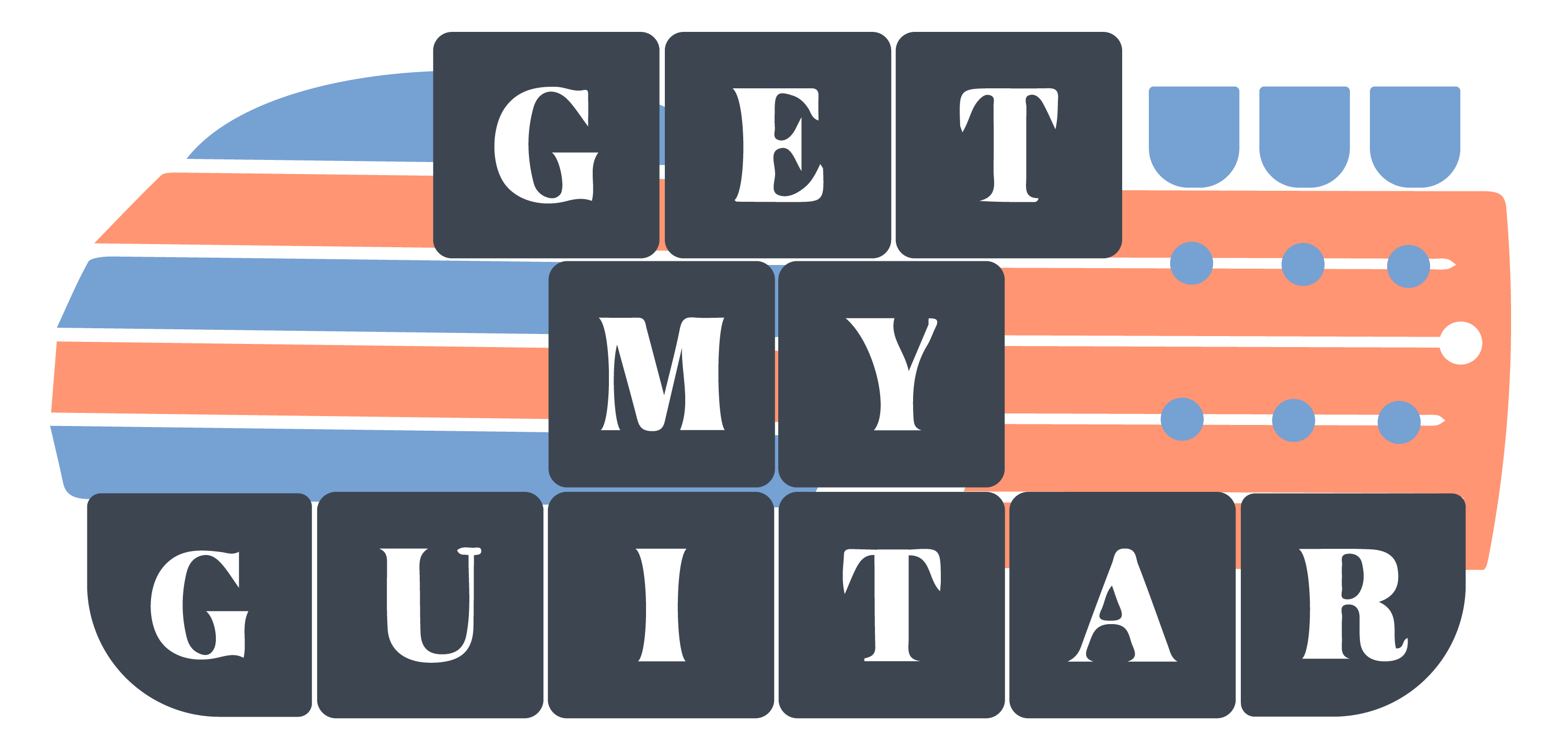The Top-5 Highest Rated 7-String Guitars in 2024

Welcome to the ultimate guide for anyone interested in the world of 7-string guitars. Whether you’re a seasoned guitarist looking to expand your range or a newcomer intrigued by the added versatility, this post will dive into everything you need to know about 7-string guitars. We’ll explore their history, the advantages and challenges they present, and highlight some iconic players who have mastered this instrument. Plus, we’ll give you a rundown of the top five 7-string guitars of 2024 available at Get My Guitar.
Understanding and Tracing the History of the 7-String Guitar
The 7-string guitar represents an evolution in the traditional guitar format by adding a seventh string, typically tuned to a low B. This additional string extends the instrument’s range, enabling guitarists to achieve deeper, richer sounds which are especially favored in metal and jazz genres. The extended lower range allows musicians to explore complex chords, richer harmonies, and heavier riffs that are not possible on a standard 6-string guitar.
The origins of the 7-string guitar trace back to 19th-century Russia, where it was primarily used as a classical instrument, enhancing the bass range for traditional compositions. The concept of adding a seventh string was not just for range but also to support richer musical expressions in a classical setting. As the guitar evolved and entered different musical genres, its adaptation continued.
By the mid-20th century, the 7-string guitar began to find its voice in the world of jazz. Jazz guitarists like George Van Eps pioneered its use, exploiting the extended range to create intricate and lush chordal arrangements. This era marked a significant evolution from its classical roots to a tool for complex, harmonically rich jazz compositions.
However, it wasn’t until the 1990s that the 7-string guitar truly entered the mainstream music scene, propelled by the rise of nu-metal and progressive metal bands such as Korn and Dream Theater. These artists utilized the 7-string’s extended low end to produce a heavier, more aggressive sound that became synonymous with the genre’s dark, intense aesthetic. This marked a significant shift from the guitar’s use in jazz to a staple in the heavy metal and rock genres, showcasing its versatility and impact on modern music styles.
Today, the 7-string guitar continues to be a versatile instrument utilized across various musical genres, celebrated for its extended harmonic and melodic capabilities. Its evolution from a classical background to a pivotal role in modern music exemplifies its adaptability and the continuous innovation in musical instrument development. Whether used to explore complex jazz arrangements or to power through metal riffs, the 7-string guitar remains a testament to the ever-evolving landscape of music.
Pros and Cons of Playing a 7-String Guitar
Pros:
- Extended Range: More strings mean more notes, allowing for greater creativity and musical expression.
- Versatility: From jazz to djent, 7-string guitars are used across various genres, accommodating diverse musical styles.
- New Textures: The additional string opens up opportunities for unique chord voicings and textures not possible on a six-string guitar.
Cons:
- Complexity: More strings can mean more complexity, particularly for beginners who might find the wider neck challenging.
- Weight: 7-string guitars can be heavier, potentially making them less comfortable during long playing sessions.
Famous Guitarists and Their 7-Strings
Several renowned guitarists have popularized the 7-string guitar through iconic songs and solos:
- Steve Vai used a 7-string guitar on his groundbreaking track “Bad Horsie,” exploiting the instrument’s extended range to create his signature sound.
- John Petrucci of Dream Theater frequently uses 7-string guitars, showcasing their versatility in progressive metal.
- Jeff Loomis of Nevermore and Arch Enemy has been a long-time advocate of the 7-string guitar, crafting complex, melodic solos that push the instrument’s boundaries.
Top 5 Rated 7-String Guitars in 2024
At Get My Guitar, we take pride in providing our customers with well-researched and vetted recommendations. Our list of the top five 7-string guitars for 2024 is crafted from a meticulous analysis combining several key factors. First, we delved into the latest sales data to understand which models are currently leading the market in popularity and sales figures.
However, knowing that numbers alone don’t tell the whole story, we also incorporated a wealth of community feedback into our rankings. We actively sought out and analyzed reviews and ratings from guitarists who own and play these guitars. This community input is invaluable, as it provides real-world insights into how these guitars perform in diverse settings—from stage performances to studio sessions.
By synthesizing this data with expert opinions from seasoned musicians and our own in-house testing, we’ve curated a list that not only reflects the best-selling models but also those that are highly regarded for their quality, performance, and reliability. This comprehensive approach ensures that our top picks are more than just popular; they are proven performers that meet the high standards of both new and experienced guitarists.
Here’s a closer look at the top five 7-string guitars you can find on Get My Guitar this year:
- Schecter Reaper 7MS Electric Guitar, 7-String – $1,049.00 Ideal for tackling intonation challenges, the Reaper 7MS features a striking poplar burl top and robust Diamond Decimator Blade pickups for sharp, defined tones.
- Schecter Omen Elite-7 Electric Guitar, 7-String – $549.00 This guitar adds serious power to your performance with Schecter Diamond “Heretic” humbuckers, perfect for players seeking a solid low end.
- Epiphone Matt Heafy Les Paul Custom Origins Electric Guitar, 7-String – $1,199.00 Designed by Matt Heafy of Trivium, this guitar combines traditional aesthetics with modern functionality, featuring Fishman MKH Fluence pickups and modern weight relief for enhanced playability.
- PRS Paul Reed Smith SE Mark Holcomb SVN Electric Guitar, 7-String – $1,249.00 Known for its beauty and performance, the Mark Holcomb SE offers a carved maple top, quilted maple veneer, and custom finishes, making it a visually and sonically appealing choice.
- Schecter Damien-7 Multiscale Guitar, Satin Black – $749.00 The Schecter Damien-7 Multiscale stands out with its multiscale design for optimal string tension and ergonomics. Its haunting Pearloid bat inlays and reinforced maple neck make it a favorite for those who demand both style and substance in their instrument.
FAQ: Unraveling the Mysteries of 7-String Guitars
1. What are 7-string guitars good for?
7-string guitars are exceptionally versatile, making them suitable for a variety of musical genres that benefit from a broader tonal range. They are particularly favored in genres like metal, jazz, and progressive rock where the additional lower string allows for heavier, more resonant riffs and complex chords. This extended range enables musicians to explore new textures and musical landscapes that are not possible with a traditional 6-string guitar.
2. How much harder is it to play a 7-string guitar?
Playing a 7-string guitar can be more challenging than a standard 6-string due to its wider neck and additional string. This requires a slightly different hand positioning and more stretch in the fingers, which might initially be difficult for players accustomed to 6-string guitars. However, with practice, playing a 7-string guitar becomes as intuitive as playing a traditional 6-string.
3. What are the disadvantages of a 7-string guitar?
The main disadvantages of a 7-string guitar include:
- Complexity: The additional string adds complexity and may overwhelm beginners who are still learning the basic chords and scales.
- Weight and Size: 7-string guitars often have a wider neck and may be heavier than 6-string guitars, which can be less comfortable during prolonged playing sessions.
- Cost: Generally, 7-string guitars are more expensive than their 6-string counterparts due to additional materials and construction needs.
4. Can a beginner learn on a 7-string guitar?
Yes, a beginner can learn on a 7-string guitar, though it might present a steeper learning curve. It’s important for beginners to consider their musical goals. If their interest lies in genres that commonly use 7-string guitars, such as metal or progressive rock, starting with a 7-string might be beneficial. However, a new player should be prepared for the initial complexity and potentially slower progress in mastering the basics.
5. How many notes does a 7-string guitar have?
A 7-string guitar typically adds a lower B string to the standard EADGBE tuning of a 6-string guitar, expanding the instrument’s range. If each string is tuned to provide 22 frets, common in modern guitars, a 7-string would offer a total of 154 different notes. This count includes overlapping notes found at different octaves and positions across the fretboard.
Conclusion – Top 5 Rated 7-String Guitars in 2024
As we conclude this exploration of the world of 7-string guitars, our journey reveals more than just the technical specifications and historical significance of these instruments. It uncovers a gateway to new musical dimensions and a deeper connection to the sounds that shape various genres, from the heavy rifts of metal to the complex harmonies of jazz.
The versatility and extended range of the 7-string guitar make it a formidable tool for musicians seeking to push the boundaries of creativity and expression. By choosing to explore this extended-range instrument, guitarists open themselves to new possibilities, discovering fresh ways to articulate their musical vision and redefine the sonic landscape.
Our top five 7-string guitars of 2024, carefully selected based on sales data, community feedback, and rigorous testing, represent the pinnacle of what these instruments can offer. Whether you are a seasoned guitarist looking to expand your repertoire or a newcomer eager to start on a richly rewarding musical path, these guitars are designed to enhance your playing experience and elevate your performances.
At Get My Guitar, we are committed to helping every musician find their perfect match in an instrument. We believe that the right guitar can be a lifelong companion on your musical journey, inspiring you to reach new heights and explore uncharted territories in sound.



















